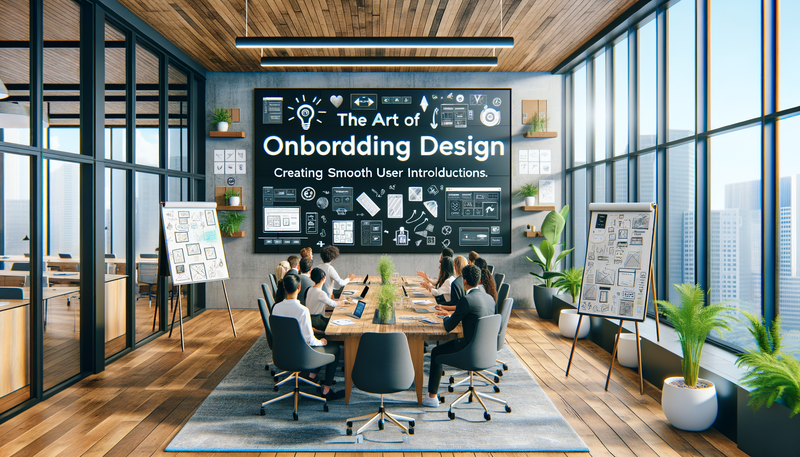The Art of Onboarding Design: Creating Smooth User Introductions
Onboarding design is a crucial aspect of user experience that can make or break a product's success. This comprehensive guide explores the art of creating smooth user introductions for websites and apps. We'll delve into effective onboarding techniques, including progressive onboarding, tooltips design, and strategies to reduce user overwhelm. By mastering these elements, you'll be able to craft engaging and intuitive onboarding experiences that help users quickly understand and appreciate your product's value. Whether you're a UX designer, product manager, or entrepreneur, this article will provide valuable insights to enhance your onboarding process and boost user retention.Table of Contents:

Understanding the Importance of Onboarding
Effective onboarding is the foundation of a positive user experience. It sets the tone for how users interact with your product and can significantly impact user retention rates. A well-designed onboarding process helps users quickly understand your product's core features and value proposition, reducing the likelihood of abandonment.Studies have shown that users who experience a smooth onboarding process are more likely to become long-term, engaged customers. By investing time and resources into creating a thoughtful onboarding experience, you can improve user satisfaction, increase feature adoption, and ultimately drive business growth.
Do you need a website? Want to build a website but don't know where to start? Our website builder is the perfect solution. Easy to use, and with the ability to customize to fit your business needs, you can have a professional website in no time.
Progressive Onboarding: A Step-by-Step Approach
Progressive onboarding is a technique that introduces users to your product's features gradually, as they naturally explore the interface. This approach prevents information overload and allows users to learn at their own pace. To implement progressive onboarding:1. Identify your product's core features and prioritize them.
2. Create a logical sequence for introducing these features.
3. Design subtle cues or prompts that guide users to discover new functionality.
4. Use contextual help to provide information when and where it's needed.
By adopting a progressive onboarding strategy, you can create a more engaging and less overwhelming experience for new users, increasing the likelihood of successful adoption and continued use of your product.
Designing Effective Tooltips
Tooltips are an essential component of onboarding design, providing brief, contextual information to guide users through your interface. When designing tooltips:1. Keep the content concise and focused on a single action or feature.
2. Use clear, jargon-free language that's easy to understand.
3. Position tooltips strategically to avoid obscuring important interface elements.
4. Implement a dismissal mechanism to give users control over their learning experience.
5. Consider using visual cues like arrows or highlights to draw attention to specific areas.
Well-designed tooltips can significantly enhance the onboarding experience by providing just-in-time guidance without disrupting the user's workflow or overwhelming them with information.
Building a website with SITE123 is easy
Reducing User Overwhelm
One of the biggest challenges in onboarding design is preventing user overwhelm. To create a smooth and manageable introduction to your product:1. Simplify your interface by hiding advanced features initially.
2. Use progressive disclosure to reveal additional functionality as users become more familiar with the basics.
3. Implement a 'quick start' option for users who want to dive in immediately.
4. Offer optional in-depth tutorials or guides for those who prefer more comprehensive instruction.
5. Use visual hierarchy and white space to create a clean, uncluttered interface.
By carefully managing the flow of information and options presented to new users, you can create an onboarding experience that feels manageable and enjoyable, rather than overwhelming or frustrating.
Personalizing the Onboarding Experience
Personalization can significantly enhance the effectiveness of your onboarding process. By tailoring the experience to individual users' needs and preferences, you can create a more engaging and relevant introduction to your product. Consider these strategies:1. Use a brief survey or questionnaire to gather information about the user's goals and experience level.
2. Offer different onboarding paths based on user roles or objectives.
3. Allow users to choose which features they want to learn about first.
4. Use data from user behavior to adapt the onboarding process in real-time.
5. Implement a skip option for experienced users who may not need extensive guidance.
By personalizing the onboarding experience, you can ensure that each user receives the most relevant and valuable information, increasing the likelihood of successful adoption and long-term engagement with your product.





